Sister Eşe
I took her photos for the first time in Maraşaltı in 2009. Ten years later, when I set out to find her, I had only the old photographs. I did not know who she was or what she was called. I really didn't think I could find her. When I went to the Marasaltı region, I saw the tents set up at the same spot. When I showed the picture to one of the kids running around, he said "Sister Eşe, here she is.". It was easier than I hoped for
I learned that her name is Sakine Filiz. Some of the people in the photos I brought had died; most of the children were married or working somewhere. Eşe Abla, now a diabetic, still kept coming to the same place for to make the traditional mats every year. She once again let me take her photos.
For drying the famous Maraş tarhana, mats made from a plant called “çiğ” are required. Çiğ, which prevents carcinogenic molds such as aflatoxins, grows in the wetlands of Çukurova in the spring, and is cut without permission and brought directly to Maraşaltı.
Eşe Abla and her neighbors, who call themselves “Abdal,” continue to weave mats from that plant. They live in tents without a bath, toilet or water throughout the summer and return to their barracks in Osmaniye to spend the winter.


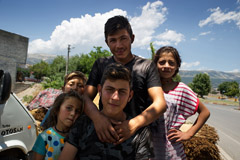
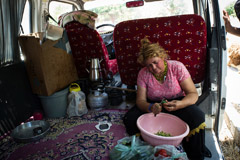
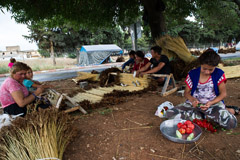
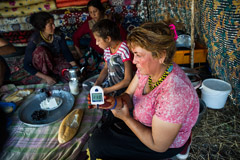
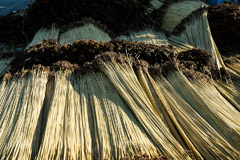
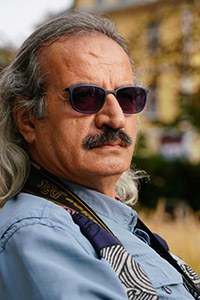 He was born in Kahramanmaraş in 1956. Publisher, printer, librarian. He has been interested in photography since 2003 and mostly works on nature, portrait and documentary photography. He finds photography important and valuable because it is an art branch in which aesthetic feelings are easily expressed and direct message transmission is very realistic. These meanings that he attributes to the phenomenon of photography force him to take pictures and present them to people. He has published the Western Ball, 1983 (Germany travel notes), Afternoon Crews / A broken-down section, 1991 (Poetic narrative), Huyuylarlar / Istanbul of all seas, 2009 (Poetry + photography). Literary Action and Nuri Pakdil opened the 2012 (Portraits) exhibition.
He was born in Kahramanmaraş in 1956. Publisher, printer, librarian. He has been interested in photography since 2003 and mostly works on nature, portrait and documentary photography. He finds photography important and valuable because it is an art branch in which aesthetic feelings are easily expressed and direct message transmission is very realistic. These meanings that he attributes to the phenomenon of photography force him to take pictures and present them to people. He has published the Western Ball, 1983 (Germany travel notes), Afternoon Crews / A broken-down section, 1991 (Poetic narrative), Huyuylarlar / Istanbul of all seas, 2009 (Poetry + photography). Literary Action and Nuri Pakdil opened the 2012 (Portraits) exhibition.